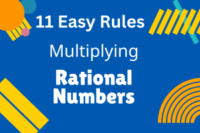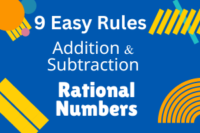Class 10 Physics Chapter 7
Published: 21 Dec 2023
Class 10 Physics Chapter 7 introduces the concept of “Introductory Electronics”. This is mainly chapter No. 16, “Introductory Electronics”, of the book of Class 10.
This article consists of Notes, SLO Based Notes and MCQs of Physics, which cover your course, board papers and clear your Physics concept for different types of tests.
Class 10 Physics Chapter 7 Notes
Introductory Electronics
SLO Base Notes
Class 10 Physics Chapter 7 MCQs
1. What is the branch of physics and technology concerned with the design of circuits using transistors and microchips?(a) Optics
(b) Electronics
(c) Mechanics
(d) Astronomy
Show Answer
Electronics
2. In which of the following is electronics widely used?
(a) Agriculture
(b) Construction
(c) Information processing, telecommunication, and signal processing
(d) Fashion design
Show Answer
Information processing, telecommunication, and signal processing
3. What property of metals allows them to conduct electricity?
(a) Color
(b) Presence of free electrons
(c) Weight
(d) Shape
Show Answer
Presence of free electrons
4. Which type of electrons in metals is referred to as ‘free electrons’?
(a) Core electrons
(b) Proton electrons
(c) Valence electrons
(d) Neutron electrons
Show Answer
Valence electrons
5. What is the term used for the minimum energy required for an electron to escape from a metal?
(a) Escape energy
(b) Work function
(c) Kinetic energy
(d) Valence energy
Show Answer
Work function
To Download Complete Notes of Physics Notes 10 Class, Click on the given link.
6. What part of the metal’s electrons is tightly bound to individual atoms?(a) Valence electrons
(b) Proton electrons
(c) Core electrons
(d) Neutron electrons
Show Answer
Core electrons
7.. Why are valence electrons in metals termed as ‘free electrons’?
(a) They are not bound to any atom
(b) They have a specific color
(c) They are the heaviest
(d) They are highly reactive
Show Answer
They are not bound to any atom
8. What is the term for the process where increasing the temperature of a metal results in electrons escaping from it?
(a) Thermodynamic cooling
(b) Thermionic emission
(c) Thermal expansion
(d) Temperature conduction
Show Answer
Thermionic emission
9. What does the term “thermionic emission” refer to?
(a) Electron escape caused by magnetic fields
(b) Electron escape induced by light
(c) Electron escapes due to temperature increase
(d) None of these
Show Answer
Electron escapes due to temperature increase
10. What factor does thermionic emission depend on?
(a) Magnetic fields
(b) Temperature
(c) Color of the metal
(d) Electrical resistance
Show Answer
Temperature
11. How is thermionic emission achieved in a vacuum?
(a) By cooling the metal
(b) By exposing the metal to sunlight
(c) By passing an electric current through a tungsten filament
(d) By applying pressure to the metal
Show Answer
By passing an electric current through a tungsten filament
12. What is the primary function of an electron gun?
(a) Emitting light
(b) Producing a focused and accelerated electron beam
(c) Generating sound waves
Show Answer
Producing a focused and accelerated electron beam
13. In which devices is an electron gun commonly used?
(a) Coffee makers
(b) Refrigerators
(c) Televisions, 3D printers, Scanning Electron Microscopes (SEM), and large synchrotrons
(d) Washing machines
Show Answer
Televisions, 3D printers, Scanning Electron Microscopes (SEM), and large synchrotrons
14. What is the composition of the electron gun?
(a) Copper tube
(b) Glass tube at very low pressure with a negatively charged electrode (cathode) and a positively charged electrode (anode)
(c) Plastic casing
(d) Aluminum frame
Show Answer
Glass tube at very low pressure with a negatively charged electrode (cathode) and a positively charged electrode (anode)
15. What materials are applied to the cathode to enhance the emission of electrons at a moderate temperature?
(a) Gold and silver
(b) Iron and steel
(c) Barium and strontium oxide
(d) Aluminum and copper
Show Answer
Barium and strontium oxide
16. What is the purpose of the control grid in the electron gun?
(a) Producing heat
(b) Controlling the flow of electrons
(c) Amplifying sound waves
(d) Emitting light
Show Answer
Controlling the flow of electrons
17. What is the approximate current and voltage required by the indirectly heated cathode in the electron gun?
(a) 100 mA and 10V
(b) 300 mA and 3.5V
(c) 600 mA and 6.3V
(d) 800 mA and 8V
Show Answer
600 mA and 6.3V
18. In an electron gun, what is the function of the anode?
(a) Emitting electrons
(b) Controlling the flow of electrons
(c) Producing a magnetic field
(d) Providing a positive charge
Show Answer
Providing a positive charge
19. Which material is commonly used to make the control grid in the electron gun?
(a) Aluminum
(b) Nickel
(c) Copper
(d) Gold
Show Answer
Nickel
20. What is the role of the accelerating anode in the electron gun?
(a) Decreasing electron velocity
(b) Controlling the intensity of the beam
(c) Applying a negative bias to the electrons
(d) Accelerating electrons with high positive potential
Show Answer
Accelerating electrons with high positive potential
21. How is the electron beam focused in the electron gun?
(a) By changing the color of the electrons
(b) By adjusting the size of the control grid
(c) By the focusing anode
(d) By the deflection system
Show Answer
By the focusing anode
22. What is the final destination of the electron beam after passing through the focusing anode?
(a) The control grid
(b) The cathode
(c) The deflection system
(d) The fluorescent screen
Show Answer
The fluorescent screen
23. What is the term used for the electron beam produced by an electron gun?
(a) Anode rays
(b) Cathode rays
(c) Proton rays
(d) Neutron rays
Show Answer
Cathode rays
24. Why are cathode rays attracted to the positive electrode in an electric field?
(a) Due to their positive charge
(b) Due to their negative charge
(c) Due to their neutral charge
(d) Due to their mass
Show Answer
Due to their negative charge
25. What is the effect of a magnetic field on ‘cathode rays’ composed of electrons?
(a) Attraction
(b) Repulsion
(c) No effect
(d) Deflection
Show Answer
Deflection
26. Which rule can be used to determine the direction of force and deflection of the electron beam in a magnetic field?
(a) Newton’s First Law
(b) Right Hand Rule ll
(c) Fleming’s Right Hand Rule
(d) Archimedes’ Principle
Show Answer
Fleming’s Right Hand Rule
27. Why does a magnetic field exert forces on electrically charged particles in motion, such as electrons in cathode rays?
(a) Due to their mass
(b) Due to their neutral charge
(c) Due to their negative charge
(d) Due to their positive charge
Show Answer
Due to their negative charge
28. What forces are exerted on cathode rays in a magnetic field when the direction of motion is not aligned with the magnetic field?
(a) Forces of attraction
(b) Forces of repulsion
(c) No forces acting on cathode rays
(d) Magnetic forces causing deflection
Show Answer
Magnetic forces causing deflection
29. What forces are exerted on cathode rays in a magnetic field when the direction of motion is aligned with the magnetic field?
(a) Forces of attraction
(b) Forces of repulsion
(c) Magnetic forces causing deflection
(d) No forces acting on cathode rays
Show Answer
No forces acting on cathode rays
30. What does C.R.O. stand for?
(a) Cathode Ray Oscilloscope
(b) Central Radiographic Operations
(c) Cathode Ray Oscillator
(d) Computerized Radiological Output
Show Answer
Cathode Ray Oscilloscope
31. In which devices is the Cathode Ray Tube (CRT) commonly used?
(a) Refrigerators
(b) Washing machines
(c) Computer monitors, TV sets, and oscilloscope tubes
(d) Microwave ovens
Show Answer
Computer monitors, TV sets, and oscilloscope tubes
32. What is the main function of the Cathode Ray Tube (CRT) in a C.R.O.?
(a) Generating radio waves
(b) Emitting light for display
(c) Cooling electronic components
(d) Generating a beam of electrons
Show Answer
Generating a beam of electrons
33. What is the purpose of the highly evacuated glass tube in the C.R.O.?
(a) To contain water
(b) To facilitate the movement of electrons
(c) To provide external connections
(d) To generate sound waves
Show Answer
To facilitate the movement of electrons
34. What part of the C.R.O. generates the electron beam?
(a) Fluorescent material
(b) Cathode
(c) Anode
(d) Deflection plates
Show Answer
Cathode
35. How does the C.R.O. produce visible light in its operation?
(a) By heating the electron gun
(b) By using magnetic fields
(c) By firing an electron beam at a fluorescent material
(d) By applying high pressure in the glass tube
Show Answer
By firing an electron beam at a fluorescent material
36. How does the electron beam cover the entire screen in a C.R.O.?
(a) By changing its color
(b) By sweeping in a circular motion
(c) By increasing its velocity
(d) By changing its vertical and horizontal directions
Show Answer
By changing its vertical and horizontal directions
37. What happens when an electron in the beam strikes a phosphor in the C.R.O.?
(a) It generates more electrons
(b) It excites an electron in the phosphor, causing visible light emission
(c) It absorbs all the energy
(d) It changes direction randomly
Show Answer
It excites an electron in the phosphor, causing visible light emission
38. How is a color image formed on the screen of a C.R.O.?
(a) By changing the frequency of the electron beam
(b) By adjusting the temperature of the electron gun
(c) By using different types of phosphors emitting red, blue, and green light
(d) By varying the intensity of the electric signal
Show Answer
By using different types of phosphors emitting red, blue, and green light
39. What is the primary purpose of a Cathode Ray Oscilloscope (C.R.O.) in electronics?
(a) To generate electric signals
(b) To observe the waveform of repetitive electric signals
(c) To change the color of light
(d) To measure magnetic fields
Show Answer
To observe the waveform of repetitive electric signals
40. How can a C.R.O. function as a voltmeter?
(a) By changing its color
(b) By emitting light
(c) By measuring potential difference
(d) By generating electrons
Show Answer
By measuring potential difference
41. Why is an oscilloscope commonly used for troubleshooting malfunctioned electronic equipment?
(a) It is lightweight
(b) It is colorful
(c) It plays music
(d) It can graphically show signals
Show Answer
It can graphically show signals
42. For checking newly designed circuitry, what kind of issues can an oscilloscope help identify?
(a) Cooking preferences
(b) Mechanical failures
(c) Design errors, voltage levels, and electrical noise
(d) Gardening problems
Show Answer
Design errors, voltage levels, and electrical noise
43. The branch of electronics that deals with analogue quantities is called:
(a) Analogue Electronics
(b) Digital Electronics
(c) Binary Electronics
(d) Voltage Electronics
Show Answer
Analogue Electronics
44. What does an analogue quantity represent in electronics?
(a) Discrete values
(b) Continuous values
(c) Binary digits
(d) Alphabetical symbols
Show Answer
Continuous values
45. The branch of electronics that deals with digital quantities is called:
(a) Digital Electronics
(b) Analogue Engineering
(c) Continuous Circuitry
(d) Voltage Variation Science
Show Answer
Digital Electronics
46. What does a digital quantity represent in electronics?
(a) Discrete values
(b) Continuous values
(c) Numerical values
(d) Alphabetical symbols
Show Answer
Discrete values
47. Which circuit is responsible for converting analogue signals to digital format?
(a) Digital to Analogue Converter (DAC)
(b) Binary Encoder
(c) Analogue to Digital Converter (ADC)
(d) Voltage Regulator
Show Answer
Analogue to Digital Converter (ADC)
48. Which circuit is responsible for converting digital signals to analogue signals?
(a) Digital to Analogue Converter (DAC)
(b) Binary Encoder
(c) Analogue to Digital Converter (ADC)
(d) Voltage Regulator
Show Answer
Digital to Analogue Converter (DAC)
49. What is the primary advantage of converting analogue information to digital format for electronic machines?
(a) Increased complexity
(b) Handling infinite possibilities
(c) Easier interpretation and processing
(d) Analogous representation
Show Answer
Easier interpretation and processing
50. What is the primary function of a logic gate in digital electronic circuitry?
(a) Voltage regulation
(b) Analog signal processing
(c) Perform logical operations
(d) Continuous current flow
Show Answer
Perform logical operations
51. How many output terminals does a logic gate typically have?
(a) Two
(b) One
(c) Three
(d) Variable
Show Answer
One
52. What are the possible output states of a logic gate?
(a) HIGH (1) and MEDIUM (2)
(b) ON and OFF
(c) LOW (0) and HIGH (1)
(d) Analog and Digital
Show Answer
LOW (0) and HIGH (1)
53. What is used to depict algebraically the operation of a logic gate or combination of gates?
(a) Boolean equation
(b) Linear equation
(c) Trigonometric equation
(d) Differential equation
Show Answer
Boolean equation
54. What is a truth table used for in term of logic circuits?
(a) Calculating resistance
(b) Depicting input voltages
(c) Representing circuit symbols
(d) Showing all possible inputs and corresponding outputs
Show Answer
Showing all possible inputs and corresponding outputs
55. Which of the following is not a basic logic gate?
(a) AND gate
(b) OR gate
(c) NOT gate
(d) Voltage gate
Show Answer
Voltage gate
56. What is the output of a simplified AND gate with two inputs when both inputs are high (1)?
(a) Low (0)
(b) Medium (0.5)
(c) High (1)
(d) Variable
Show Answer
High (1)
57. How is the Boolean equation for the AND function represented?
(a) $ X = A + B $
(b) $ X = AB $
(c) $ X = \frac{A}{B} $
(d) $ X = A – B $
Show Answer
$ X = AB $
58. What is the primary function of an AND gate in terms of input conditions?
(a) Output is high if any input is high
(b) Output is high if one input is high
(c) Output is high only if both inputs are high
(d) Output is high regardless of input conditions
Show Answer
Output is high only if both inputs are high
59. In the truth table, what is the output (X) when both inputs (A and B) are low (0)?
(a) 0
(b) 1
(c) Not defined
(d) Variable
Show Answer
0
60. What is the circuit symbol for the AND gate described?
(a) Circle
(b) Triangle
(c) Square
(d) None of these
Show Answer
None of these
61. How is the logical multiplication of inputs represented in the AND gate?
(a) Addition
(b) Subtraction
(c) Multiplication
(d) Division
Show Answer
Multiplication
62. What does the AND gate’s truth table show for the combination $ A = 1 \ and \ B = 0 $?
(a) 0
(b) 1
(c) Undefined
(d) Variable
Show Answer
0
63. What is the output of a simplified OR gate with two inputs when both inputs are high (1)?
(a) Low (0)
(b) Medium (0.5)
(c) High (1)
(d) Variable
Show Answer
High (1)
64. How is the Boolean equation for the OR function represented?
(a) $ X = A + B $
(b) $ X = AB $
(c) $ X = \frac{A}{B} $
(d) $ X = A – B $
Show Answer
$ X = A + B $
65. What is the primary function of an OR gate in terms of input conditions?
(a) Output is high if any input is high
(b) Output is high only if both inputs are high
(c) Output is high if no input is high
(d) Output is high regardless of input conditions
Show Answer
Output is high if any input is high
66. In the truth table, what is the output (X) when both inputs (A and B) are low (0)?
(a) 0
(b) 1
(c) Not defined
(d) Variable
Show Answer
0
67. How is the logical addition of inputs represented in the OR gate?
(a) Addition
(b) Subtraction
(c) Multiplication
(d) Division
Show Answer
Addition
68. What does the OR gate’s truth table show for the combination $ A = 1 \ and \ B = 0 $?
(a) 0
(b) 1
(c) Undefined
(d) Variable
Show Answer
1
69. What is the primary function of a NOT gate in digital electronic circuitry?
(a) Logical addition
(b) Complement or inversion
(c) Multiplication
(d) Continuous signal processing
Show Answer
Complement or inversion
70. How many inputs does a NOT gate typically have?
(a) One
(b) Two
(c) Three
(d) Variable
Show Answer
One
71. What is the output of a NOT gate when a High level (1) is input?
(a) Low-level (0)
(b) Medium (0.5)
(c) High-level (1)
(d) Variable
Show Answer
Low-level (0)
72. What Boolean equation represents the function of a NOT gate?
(a) $ X = A + B $
(b) $ X = AB $
(c) $ X = \overline{A} $
(d) $ X = A – B $
Show Answer
$ X = \overline{A} $
73. What is the circuit symbol for a NOT gate.
(a) Circle
(b) Triangle
(c) Bulb
(d) Square
Show Answer
Triangle
74. In the truth table, what is the output (X) when the input (A) is Low level (0)?
(a) 0
(b) 1
(c) Undefined
(d) Variable
Show Answer
1
75. What is the common name for a NOT gate due to its function of complementing a signal?
(a) AND gate
(b) OR gate
(c) Inverter
(d) NOR gate
Show Answer
Inverter
76. How does a NOT gate contribute to the inversion of a digital signal?
(a) By adding a constant value
(b) By multiplying the input
(c) By complementing the input
(d) By filtering the input signal
Show Answer
By complementing the input
77. How does the operation of a NAND gate differ from an AND gate?
(a) NAND gate has more inputs
(b) NAND gate has an inverted output
(c) AND gate has an inverted output
(d) AND gate performs logical addition
Show Answer
NAND gate has an inverted output
78. What is the symbol for a NAND gate derived from?
(a) OR gate with an inversion circle
(b) AND gate with an inversion circle
(c) OR gate with a square
(d) NOT gate with a triangle
Show Answer
AND gate with an inversion circle
79. What is the Boolean equation for a NAND gate?
(a) $ X = A + B $
(b) $ X = AB $
(c) $ X = A \div B $
(d) $ X = \overline{AB} $
Show Answer
$ X = \overline{AB} $
80. What is the truth table output of a NAND gate when both inputs (A and B) are high (1)?
(a) 0
(b) 1
(c) Undefined
(d) Variable
Show Answer
0
81. What happens to the output of a NAND gate when either input (A or B) is low (0)?
(a) It remains low
(b) It becomes high
(c) It becomes undefined
(d) It varies based on other factors
Show Answer
It becomes high
82. What does the inversion bar over (A and B) in the Boolean equation signify?
(a) Logical multiplication
(b) Logical addition
(c) Complement of (A and B)
(d) Logical subtraction
Show Answer
Complement of (A and B)
83. How does the operation of a NOR gate differ from an OR gate?
(a) NOR gate has more inputs
(b) NOR gate has an inverted output
(c) OR gate has an inverted output
(d) OR gate performs logical addition
Show Answer
NOR gate has an inverted output
84. What is the symbol for a NOR gate derived from?
(a) AND gate with an inversion circle
(b) OR gate with a square
(c) OR gate with an inversion circle
(d) NOT gate with a triangle
Show Answer
OR gate with an inversion circle
85. What is the Boolean equation for a NOR gate?
(a) $ X = A + B $
(b) $ X = AB $
(c) $ X = A \div B $
(d) $ X = \overline{(A+B)} $
Show Answer
$ X = \overline{(A+B)} $
86. What is the truth table output of a NOR gate when both inputs (A and B) are high (1)?
(a) 0
(b) 1
(c) Undefined
(d) Variable
Show Answer
0
87. What happens to the output of a NOR gate when either input (A or B) is high (1)?
(a) It remains high
(b) It becomes low
(c) It becomes undefined
(d) It varies based on other factors
Show Answer
It becomes low
88. What does the inversion bar over (A OR B) in the Boolean equation signify?
(a) Logical multiplication
(b) Logical addition
(c) Complement of (A OR B)
(d) Logical subtraction
Show Answer
Complement of (A OR B)
89. What is the general expression for the number of possible combinations of given inputs?
(a) $ 2n $
(b) $ n^2 $
(c) $ \frac{n}{2} $
(d) $ 3n $
Show Answer
$ n^2 $
90. If there are 4 inputs in any logic gate, how many combinations are possible?
(a) 8 combinations
(b) 12 combinations
(c) 16 combinations
(d) 24 combinations
Show Answer
16 combinations
91. In the automatic light bulb switching scenario, what condition must be met for the street lights to turn on using an AND gate?
(a) Both the light and timer time must be low (0)
(b) Either the light or timer time must be high (1)
(c) Either the light or timer time must be low (0)
(d) Both the light and timer time must be high (1)
Show Answer
Both the light and timer time must be high (1)
Class 10 Physics MCQs (All Chapters)

- Be Respectful
- Stay Relevant
- Stay Positive
- True Feedback
- Encourage Discussion
- Avoid Spamming
- No Fake News
- Don't Copy-Paste
- No Personal Attacks



- Be Respectful
- Stay Relevant
- Stay Positive
- True Feedback
- Encourage Discussion
- Avoid Spamming
- No Fake News
- Don't Copy-Paste
- No Personal Attacks





